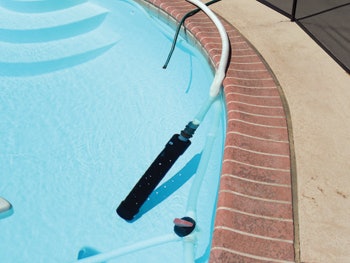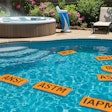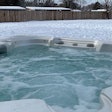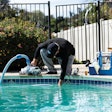
It is common currency among many service techs that when chlorine is becoming inactive due to high TDS levels, that TDS can only be lowered by draining water and refilling with source water that has been tested to insure it is low in TDS. But that's just no longer true, according to Samantha C. Larimer, co-owner of SaveWater Mobile Pool Filtration.
Mobile pool filtration systems, using reverse osmosis technology, can lower TDS, salt, cyanuric acid, calcium and even phosphates without the need to subject the pool to the trauma that may occur by removing the water (lifting, plaster delamination, etc.), she says.
There are several companies in the U.S. that offer this mobile RO filtration service onsite, including Larimer's company in San Diego.
The idea grew from a seed planted in a pool, Larimer says: "We have a pool company in San Diego, and my sister has a pool company in Arizona, and we were swimming in her pool, and she was talking about how often they have to drain due to the calcium.

"My husband said, "Why don't we just put a desalination unit on a truck. And the next thing you know, he's off building one. After that we went on the Internet and saw that there are several companies doing it."
Mobile RO (for reverse osmosis) works using fairly standard desalination technology that has been used for decades throughout the world to turn seawater into fresh water. "The one we use is a system we bought in Florida; we flew out there, picked it up and drove it back here in a U-Haul," Larimer says.
Basically, the system is just another filter, but this one can filter so fine and so fast, Larimer says, it can pull unwanted TDS and conditioner and even salt out of pool water in a single day, giving the pool a level of clarity rarely seen, even after thorough DE filtration. "It's like a dialysis machine. You run a line to the pool, pump the water through the machine, and then back into the pool."

"Our process might cause them to lose 5,000 gallons, depending on the size of the pool, the amount of TDS, how much conditioner, or salt in the pool. That water that we do end up discharging has all the minerals in it, it's quite cloudy-looking.
"The whole thing takes us a day. We hook it up in the morning, and take it down about 5 o'clock. And people can swim in it that night. You can visually see a big difference in the water that has been through the machine."
The business has really taken off in the last two years, Larimer says, and for all sorts of different reasons, not all of them water conservation related. "Some people just don't want to drain their pool."












































